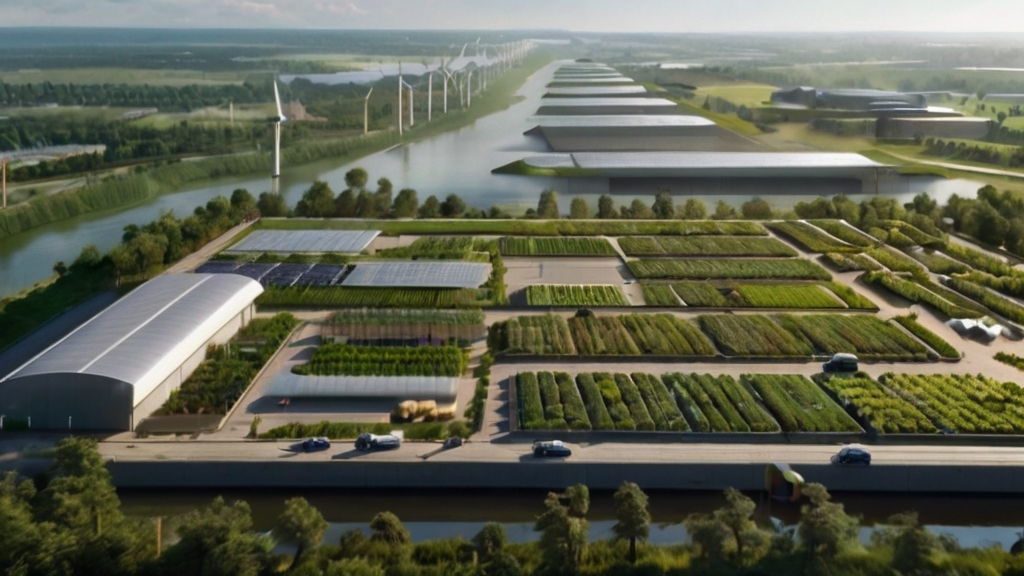Eco-logistics or green logistics, as it is commonly referred to, has emerged as a pivotal concept in the contemporary business landscape. It encapsulates a set of sustainable policies and measures aimed at mitigating the environmental impact generated by the logistics sector. In essence, green logistics entails a reconfiguration of processes, structures, and systems within transport, distribution, and storage of goods, with the overarching goal of achieving a harmonious balance between ecology and economy.
Traditionally, logistics decisions have often sidelined environmental sustainability. However, with the escalating concerns over climate change and environmental degradation, the imperative for green logistics has become increasingly apparent. The crux of this paradigm shift lies in addressing pivotal questions: How can businesses effectively manage green logistics? Why should green logistics policies be integrated into company strategies? What are the challenges facing the implementation of sustainable logistics practices?
Objectives of Green Logistics
Green logistics endeavors to achieve several key objectives:
- Measurement of Carbon Footprint: Assessing the carbon footprint of logistics operations serves as a crucial starting point for implementing sustainability measures and monitoring their efficacy.
- Pollution Reduction: Efforts are directed towards curbing air, soil, water, and noise pollution, with a keen focus on analyzing the impact of each logistics facet, particularly transport-related activities.
- Resource Rationalization: Sustainable logistics entails prudent utilization of resources by promoting practices such as reusing containers and recycling packaging materials.
- Supply Chain Sustainability: Eco-logistics extends beyond individual companies to encompass the entire supply chain, emphasizing the design of products and packaging to minimize environmental impact.
Challenges Facing Green Logistics
Despite its inherent significance, green logistics encounters several hurdles in its path to implementation:
- Dependence on Fossil Fuels: The logistics sector remains heavily reliant on fossil fuels, particularly in transport, posing a formidable challenge in transitioning towards greener alternatives.
- Last Mile Deliveries: The surge in e-commerce has exacerbated urban traffic congestion, accentuating the environmental impact of last-mile deliveries, where vehicles often operate without full loads.
- Infrastructure Deficiencies: The lack of adequate infrastructure presents a significant impediment to the adoption of sustainable logistics practices, necessitating cross-sectoral collaboration to address regulatory and infrastructural gaps.
- Investment Constraints: Strained profit margins and competitive pressures often deter businesses from investing in eco-friendly infrastructure, automation, or efficient handling equipment.
- Customer Demand vs. Sustainability: Balancing customer demands for swift deliveries with sustainable logistics practices poses a conundrum, particularly when consumers prioritize convenience over environmental considerations.
Strategies for Implementing Eco-Friendly Logistics Approaches
To navigate the challenges and embrace sustainable logistics, businesses can adopt several strategies:
- Procurement Policies: Incorporating eco-friendly criteria into procurement policies facilitates the sourcing of sustainable supplies and materials, promoting environmentally responsible practices among suppliers.
- Transport Fleet Optimization: Efficient fleet management, coupled with route planning and load pooling, serves as a linchpin in minimizing carbon emissions associated with transport operations.
- Sustainable Warehouse Practices: From sustainable construction to energy-efficient management, warehouses play a pivotal role in green logistics, with certifications such as Breeam and Leed endorsing sustainability efforts.
- Waste Management: Implementing waste sorting processes, reducing paper usage, and promoting recycling initiatives within warehouses are essential steps towards achieving environmental sustainability.
- Stock Management and Reverse Logistics: Enhancing stock management practices and optimizing reverse logistics processes contribute to overall efficiency and waste reduction within the supply chain.
Why Embrace Green Logistics?
Embracing green logistics offers compelling advantages:
- Strategic Advantage: Green logistics policies not only enhance brand value but also confer a strategic advantage over competitors, positioning companies as sustainability leaders.
- Cost Savings: Energy-saving measures not only mitigate environmental impact but also translate into tangible cost savings amid escalating supply costs.
- Regulatory Compliance: By adopting sustainable logistics practices, companies ensure compliance with evolving environmental regulations, mitigating regulatory risks.
In conclusion, green logistics represents a pivotal shift towards sustainable business practices, balancing environmental stewardship with economic imperatives. As companies navigate the complexities of the modern business landscape, embracing eco-friendly logistics approaches emerges as a strategic imperative for long-term success and environmental stewardship.





